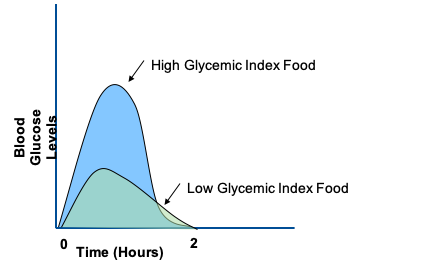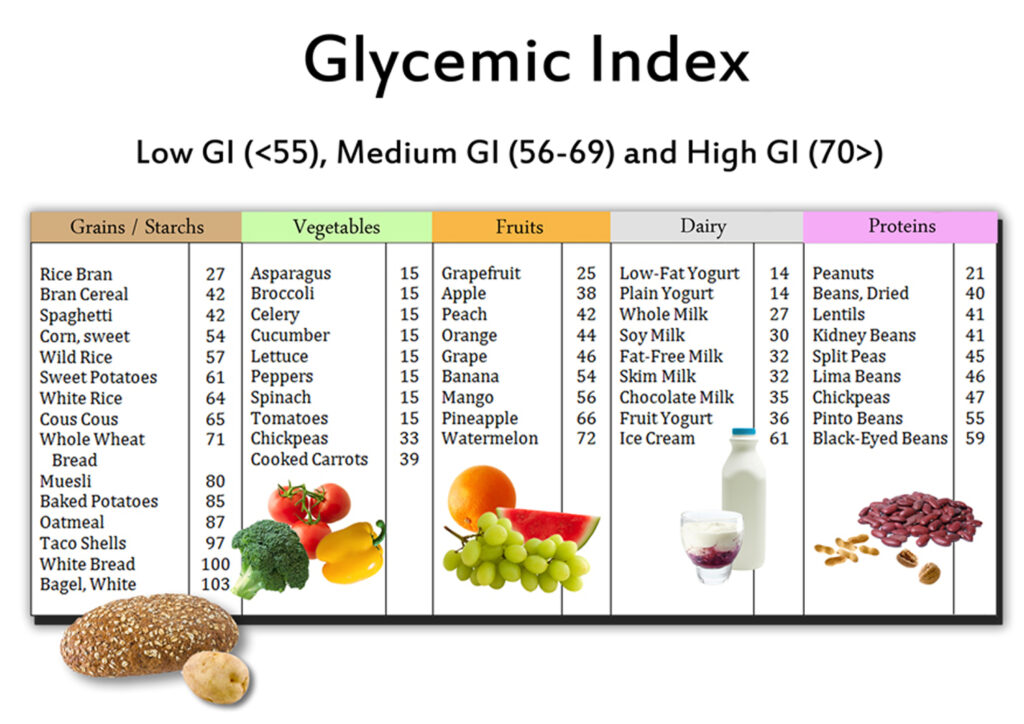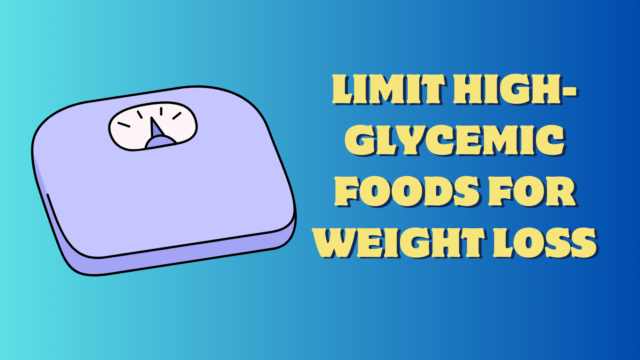When we are busy in our day to day life we don’t care about our proper diet which may bring bad impact in our health. Maintaining glycemic food is also important for us.
Achieve Weight Loss Goals by Limit High-Glycemic Foods
For achieving your weight loss goals, one important aspect to consider is the glycemic index (GI) of the foods you eat. The glycemic index is a scale that measures how quickly carbohydrates in a particular food raise blood sugar levels after consumption. Foods with a high GI cause a rapid and significant spike in blood sugar, while those with a low GI result in a slower, more sustained increase.
High-glycemic foods include items like white bread, sugary cereals, candies, and soda. These foods are typically refined and processed, which means they have had their natural fibers and nutrients stripped away, leaving behind easily digestible sugars. When you consume high-GI foods, your body digests them quickly, causing a surge in blood sugar levels.

The body’s response to this surge is to release insulin, a hormone that helps regulate blood sugar. Insulin helps transport sugar from the bloodstream into cells for energy or storage. However, when blood sugar rises too rapidly and insulin levels spike, it can lead to a series of problems that undermine your weight loss efforts.
- Blood Sugar Roller Coaster: High-glycemic foods lead to a rapid rise and fall in blood sugar levels. This roller coaster effect can result in a quick burst of energy followed by a crash, making you feel hungry, fatigued, and craving more sugary or high-calorie foods shortly after eating. These cravings can often lead to overeating or choosing unhealthy snacks.
- Insulin Resistance: Consistently consuming high-GI foods can contribute to the development of insulin resistance. In insulin resistance, your cells become less responsive to the effects of insulin, making it necessary for your body to produce more of this hormone. This can lead to elevated levels of insulin in your bloodstream, and over time, it can promote fat storage, particularly in the abdominal region.
- Weight Gain and Fat Storage: Elevated insulin levels are associated with the storage of excess calories as fat, especially around the belly. This not only makes it harder to shed unwanted pounds but also increases the risk of metabolic conditions like type 2 diabetes and heart disease.
To successfully achieve your weight loss goals, it’s important to understand how to navigate the glycemic index and incorporate foods with a lower GI into your diet. Low-GI foods include whole grains, legumes, lean proteins, non-starchy vegetables, and certain fruits. These foods are rich in fiber and nutrients, leading to a slower, more controlled increase in blood sugar levels after consumption.

When you emphasize low-GI foods in your diet, you experience several benefits that support your weight loss efforts:
- Stable Blood Sugar: Low-GI foods help maintain stable blood sugar levels, preventing energy crashes and sugar cravings. You feel satisfied and energized for longer periods.
- Appetite Control: Consuming low-GI foods can help you feel full and satisfied, reducing the urge to overeat or snack on unhealthy options between meals.
- Sustained Energy: Low-GI foods provide a steady and sustained release of energy, keeping you alert and focused throughout the day.
- Fat Loss: With stabilized blood sugar and insulin levels, your body is more likely to use stored fat for energy, facilitating weight loss.
- Improved Metabolic Health: Lower-GI diets are associated with improved insulin sensitivity and reduced risk factors for chronic diseases.
To implement a low-GI approach to your diet for weight loss, consider these practical tips:
1. Choose Whole Grains: Opt for whole grains like brown rice, quinoa, whole wheat pasta, and steel-cut oats instead of refined grains.
2. Include Lean Proteins: Lean proteins such as chicken, turkey, fish, tofu, and legumes can help balance your meals and control blood sugar.
3. Load Up on Non-Starchy Vegetables: Non-starchy vegetables like leafy greens, broccoli, cauliflower, and bell peppers can fill your plate and support your weight loss.
4. Limit Sugary Snacks and Beverages: Minimize or eliminate sugary snacks, candies, and sugary drinks from your diet.
5. Be Mindful of Portion Sizes: While the GI of a food is important, portion sizes also matter. Controlling portion sizes can help manage calorie intake.
Conclusion
limiting high-glycemic foods and incorporating low-GI options into your diet is a powerful strategy for weight loss and overall health. By choosing whole, unprocessed foods that stabilize your blood sugar and insulin levels, you’ll find it easier to control your appetite, shed excess pounds, and improve your metabolic well-being. So, the next time you plan your meals, think about the glycemic index, and make choices that promote your weight loss goals.
Keeping yourself healthy is the only way to survive more and we should known this without ignoring. Look after your health and take care of yourself.

